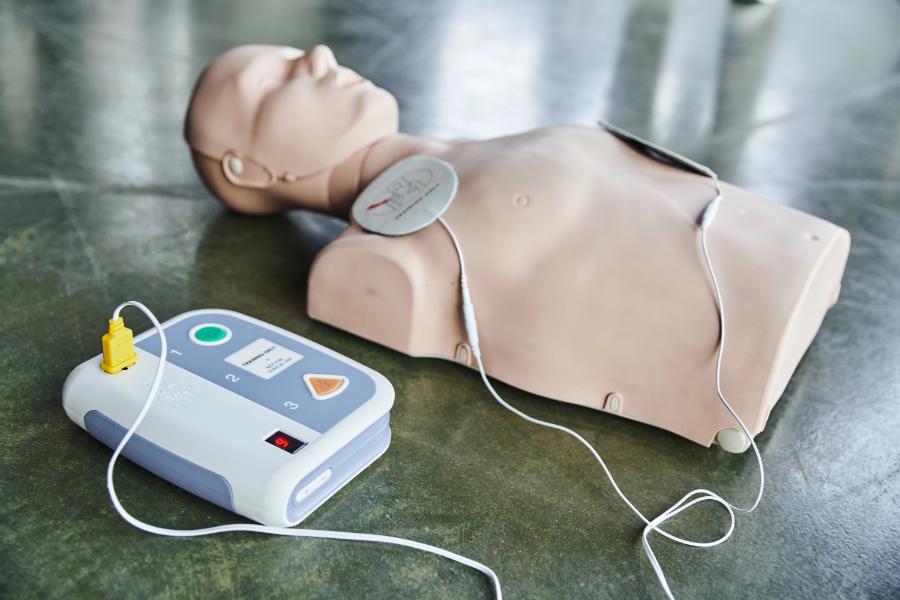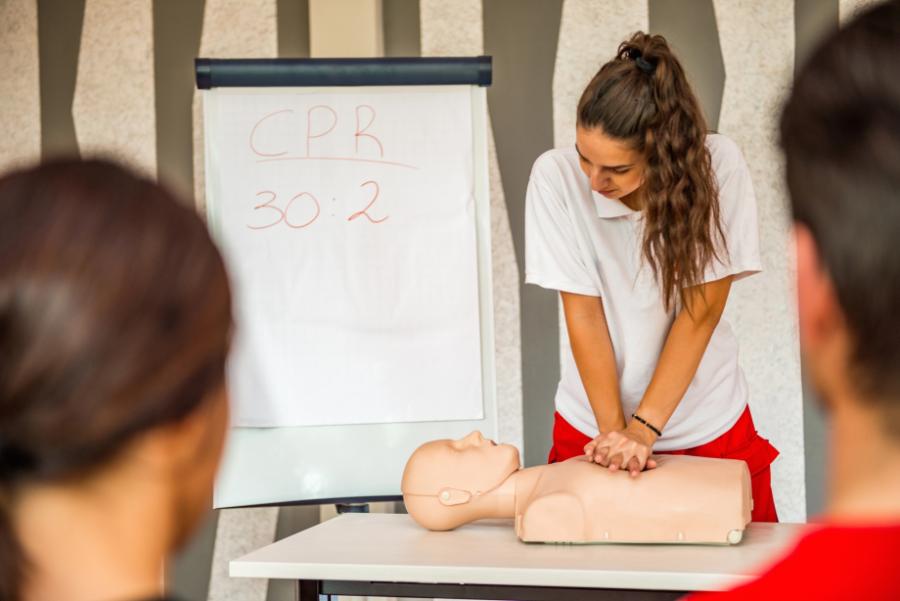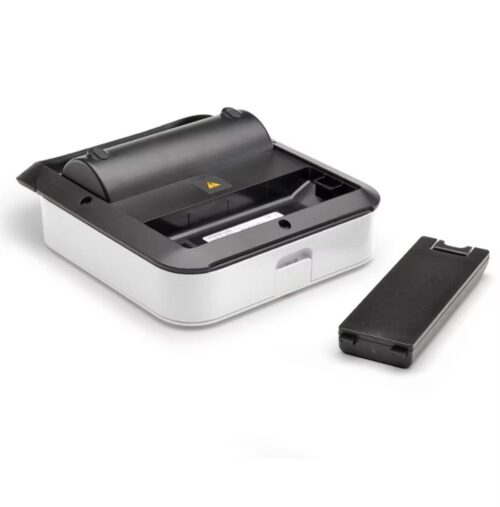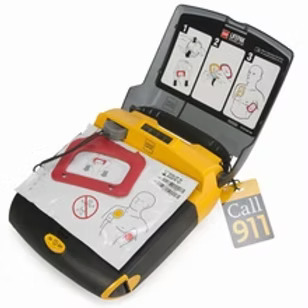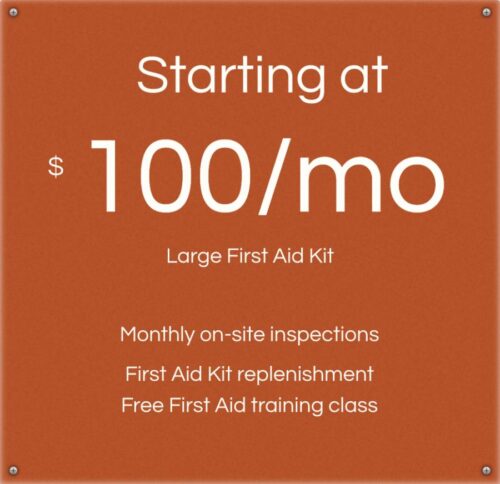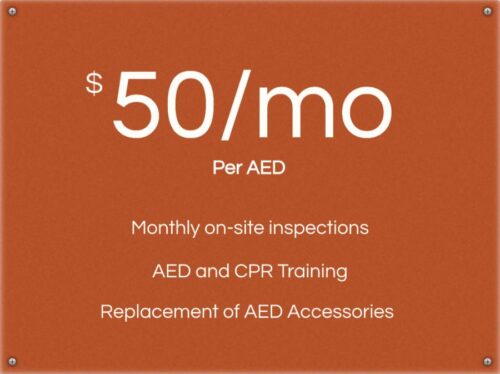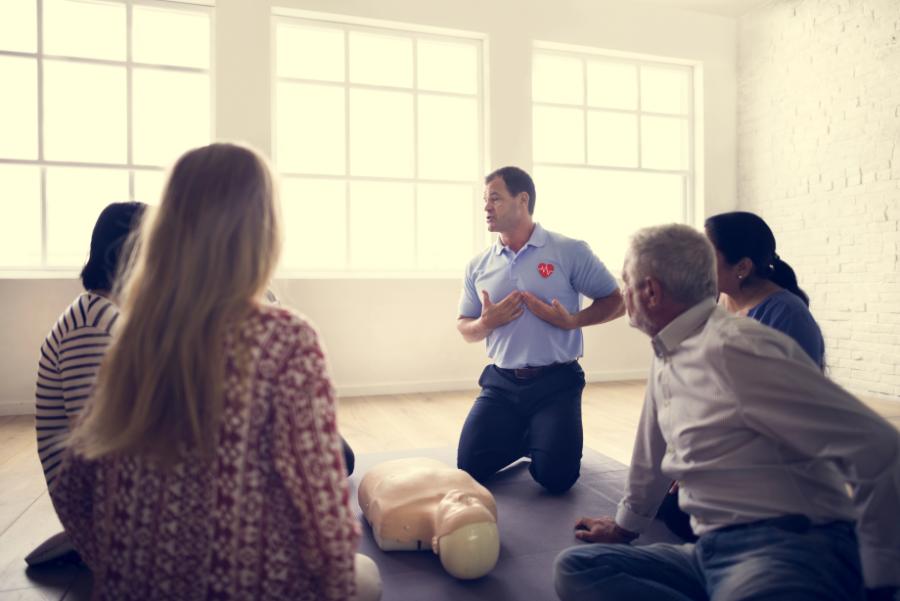
Cardiopulmonary Resuscitation (CPR) is a lifesaving technique that can make the difference between life and death in emergency situations. It’s a crucial skill that everyone should possess, as accidents and medical emergencies can happen anytime, anywhere. CPR is a combination of high-quality chest compressions and rescue breaths that help maintain blood flow and oxygen supply to the brain and other vital organs until advanced medical assistance arrives.
Unlocking the Mystery: Understanding CPR and Its Significance
The significance of CPR cannot be overstated. Every year, countless lives are saved because someone nearby knew how to perform CPR correctly. Whether you’re a healthcare professional, a teacher, a parent, or simply a concerned citizen, understanding CPR can empower you to act quickly and confidently in life-threatening situations, potentially saving a loved one, a coworker, or even a stranger.
CPR Certification Options: Which Path Will You Choose?
When it comes to CPR certification, there are several options to choose from, each tailored to meet specific needs and skill levels. The two most common types are Basic Life Support (BLS) and Advanced Cardiovascular Life Support (ACLS).
Basic Life Support (BLS) is designed for individuals who want to learn the fundamentals of CPR, including how to recognize and respond to breathing and cardiac emergencies. This certification is ideal for healthcare providers, teachers, childcare workers, and anyone who wants to be prepared for emergencies involving adults, children, and infants.
Advanced Cardiovascular Life Support (ACLS), on the other hand, is a more comprehensive certification that builds upon the BLS skills. It’s primarily intended for healthcare professionals who need to be proficient in managing advanced cardiovascular life support situations, such as cardiac arrest, acute coronary syndromes, and stroke.
Choosing the right CPR certification depends on your career goals and personal preferences. If you’re a healthcare professional or aspire to work in the medical field, ACLS certification is highly recommended. However, if you’re a non-medical professional seeking basic life-saving skills, BLS certification may be the perfect starting point.
Highlights of the CPR Certification Journey
CPR certification courses are designed to be interactive and engaging, ensuring that participants not only learn the theoretical aspects but also gain hands-on experience. Here are some of the highlights you can expect during your CPR certification journey:
- Hands-on Practice with Mannequins: You’ll have the opportunity to practice CPR techniques on realistic mannequins, allowing you to develop muscle memory and confidence in performing chest compressions and rescue breaths.
- Video Demonstrations: Instructors often use video demonstrations to visually explain the proper techniques and procedures, making it easier to understand and retain the information.
- Real-Life Scenarios: Many courses incorporate real-life scenarios and case studies, helping you learn how to respond to various emergency situations and make critical decisions under pressure.
- Interactive Group Activities: Engaging group activities and discussions enhance the learning experience, allowing you to collaborate with others and gain different perspectives.
By participating in these interactive elements, you’ll not only acquire the necessary skills but also develop a deeper understanding of the importance of CPR and gain the confidence to act swiftly in emergency situations.
The Phoenix Experience: Finding the Best CPR Certification Courses in AZ
If you’re located in Phoenix, Arizona, you’ll find a wide range of CPR certification providers to choose from. However, it’s crucial to select a reputable and accredited program that meets your needs and learning preferences. Here are some key factors to consider when searching for the best CPR certification courses in Phoenix:
Accreditation and Instructor Qualifications
Look for courses that are accredited by nationally recognized organizations, such as the American Heart Association (AHA) or the American Red Cross. These accreditations ensure that the course curriculum adheres to the latest guidelines and best practices. Additionally, make sure the instructors are highly qualified and experienced in delivering CPR training.
Course Structure and Delivery Methods
Evaluate the course structure and delivery methods to find a program that aligns with your learning style. Some providers offer traditional classroom-based courses, while others offer online or blended learning options. Consider factors such as class size, hands-on practice opportunities, and the availability of evening or weekend classes to accommodate your schedule.
Student Reviews and Testimonials
Don’t underestimate the power of word-of-mouth. Research student reviews and testimonials to gain insights into the quality of instruction, course materials, and overall experience. Positive reviews can be a strong indicator of a reputable and effective CPR certification program.
From Classroom to Carrying Card: Steps to Certification Success
Once you’ve chosen the right CPR certification course, it’s important to understand the steps involved in obtaining your certification. Here’s a typical process you can expect:
- Enrollment: Sign up for the course of your choice, either online or through the provider’s registration process.
- Course Preparation: Familiarize yourself with any pre-course materials or resources provided by the instructor. This will help you get a head start and make the most of your learning experience.
- Attend the Course: Participate actively in the classroom or online sessions, taking notes, asking questions, and engaging in hands-on practice.
- Final Assessment: Demonstrate your knowledge and skills through a written exam and practical evaluation. Successful completion of these assessments will earn you your CPR certification.
- Certification Card: Upon passing the final assessment, you’ll receive your official CPR certification card, which is typically valid for two years.
To ensure success, it’s crucial to attend all sessions, practice diligently, and follow the instructor’s guidance. With dedication and preparation, you’ll be well-equipped to confidently navigate the certification process and become a certified CPR provider.
Perks Beyond the Card: Personal and Professional Benefits of CPR Certification
While obtaining a CPR certification card is the primary goal, the benefits of this training extend far beyond just a piece of paper. Being CPR certified can have a profound impact on both your personal and professional life:
Personal Benefits
- Increased Confidence: Knowing that you have the skills to potentially save a life in an emergency can boost your self-confidence and provide a sense of empowerment.
- Peace of Mind: Having CPR training can give you peace of mind, knowing that you’re prepared to respond effectively in case of an emergency involving a loved one or a stranger.
- Community Involvement: Being CPR certified can open doors for volunteering opportunities and community service initiatives, allowing you to contribute to the well-being of your local community.
Professional Benefits
- Enhanced Job Prospects: In many industries, such as healthcare, education, and childcare, CPR certification is often a mandatory requirement or a highly desirable skill.
- Career Advancement: For healthcare professionals, advanced CPR certifications like ACLS can lead to career growth opportunities and increased responsibilities.
- Workplace Safety: Employers value individuals who are trained in emergency response techniques, as they contribute to a safer work environment for everyone.
By pursuing CPR certification, you’re not only gaining a valuable skill but also investing in your personal growth and professional development, opening doors to new opportunities and experiences.
Stay Fresh: Keeping Your CPR Skills and Certification Current
CPR techniques and guidelines are constantly evolving based on the latest research and best practices. To ensure that you’re providing the most effective and up-to-date care, it’s essential to maintain and update your CPR certification regularly.
Most CPR certifications are valid for two years, after which you’ll need to renew your certification through a recertification course or refresher training. These renewal courses are typically shorter than the initial certification course and focus on reviewing the key concepts and techniques, as well as introducing any new guidelines or updates.
In addition to renewing your certification, it’s recommended to practice your CPR skills regularly. You can do this by attending skill refresher sessions, participating in mock drills, or even practicing on a CPR mannequin at home. Keeping your skills sharp will ensure that you’re prepared to respond effectively in an emergency situation.
Furthermore, staying informed about the latest CPR guidelines and research can help you stay ahead of the curve. Follow trusted sources, such as the American Heart Association or the American Red Cross, to stay up-to-date on any changes or advancements in CPR techniques and protocols.
By prioritizing the maintenance and renewal of your CPR certification, you’ll not only remain compliant with industry standards but also ensure that you’re providing the highest level of care and increasing the chances of successful outcomes in emergencies.
Real-Life Heroes: Inspiring Stories of CPR in Action
While the statistics and facts about CPR are compelling, nothing drives home the importance of this life-saving skill like real-life stories of individuals who have been impacted by it. Here are a few inspiring tales of how CPR certification empowered ordinary people to become extraordinary heroes:
The Heroic Teacher
In a small town, a fourth-grade teacher’s quick thinking and CPR skills saved the life of one of her students who had collapsed on the playground. Thanks to her CPR training, she was able to provide immediate assistance until emergency responders arrived, ensuring the child’s survival and preventing any long-term consequences.
The Courageous Bystander
During a family outing at a local park, a mother witnessed a horrific accident where a young child fell into a swimming pool. Amidst the chaos, a bystander who had recently completed a CPR certification course sprang into action, performing chest compressions and rescue breaths until paramedics arrived. The child’s life was saved, thanks to the bystander’s courage and preparedness.
The Selfless Healthcare Worker
In a busy hospital emergency room, a patient went into cardiac arrest. The quick response of a certified nurse, who immediately initiated CPR and coordinated with the medical team, ensured that the patient’s life was preserved until advanced interventions could be administered.
These stories serve as powerful reminders of the profound impact that CPR certification can have, not only on those who receive life-saving aid but also on those who deliver it. By becoming CPR certified, you too can be prepared to make a difference when it matters most.
FAQs: Your CPR Certification Questions Answered
What’s the difference between CPR and BLS certification?
CPR (Cardiopulmonary Resuscitation) is a specific technique that involves chest compressions and rescue breaths to provide oxygen and maintain blood flow in an emergency. BLS (Basic Life Support) certification covers CPR skills but also includes training on how to respond to other emergencies, such as choking, bleeding, and using an automated external defibrillator (AED).
How long does it take to complete a CPR certification course?
The duration of a CPR certification course can vary depending on the provider and the type of certification you’re pursuing. Generally, a basic CPR certification course can take anywhere from 4 to 8 hours, while more advanced certifications like ACLS may require longer training periods.
How often do I need to renew my CPR certification?
Most CPR certifications are valid for two years. After that, you’ll need to complete a recertification course or refresher training to maintain your certification status.
Can I take a CPR certification course online?
Many providers offer online CPR certification courses, which can be a convenient option for those with busy schedules or those who prefer self-paced learning. However, it’s important to note that most online courses also require an in-person skills evaluation or hands-on practice component to ensure proficiency.
Is CPR certification required for my job or profession?
CPR certification requirements vary depending on your profession and the specific regulations or guidelines in your area. In many healthcare-related fields, as well as professions involving children or vulnerable populations, CPR certification may be mandatory or highly recommended.


